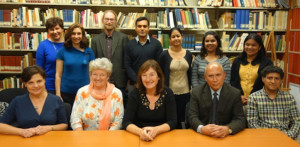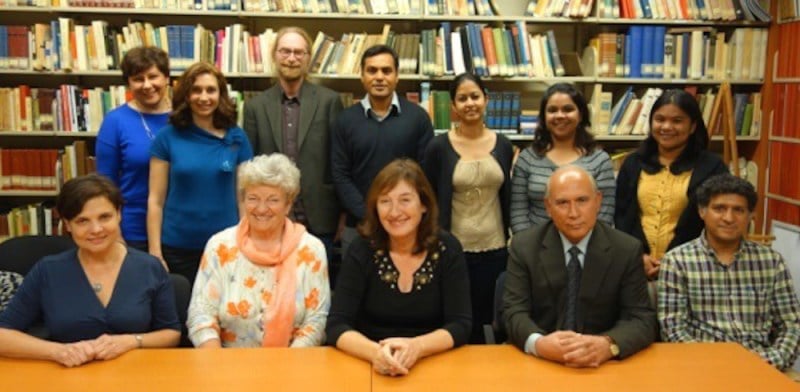For more than 30 years, the Special Language Program (SLP) has allowed students to learn less commonly taught languages ranging from Lakota to Norwegian.

SLP has grown to accommodate more than 160 students and 18 to 20 languages per quarter with American Sign Language, Vietnamese and Hindi proving the most popular across the years, according to Eva Prionas M.A.’76 Ph.D. ‘81, the program’s coordinator.
SLP began as a small-scale program within the Stanford Linguistics Department in the ‘70s due to the desire and need that linguists had to study the structure of language, Prionas said.
In the mid ‘90s, SLP’s move to become part of the Language Center brought about more visibility, support and resources.
“With moving under the Language Center, there was more collaboration with the other languages,” Prionas said. “It’s really helpful to be among other language-teaching peers.”
Along with the increased visibility, SLP also began to receive more requests for languages. According to Prionas, now five to seven languages are requested per quarter.
Requests, however, are not always fulfilled for a variety of reasons including unavailability of an instructor competent enough to teach the classes, Prionas added.
Setting the curriculum
A language qualifies for SLP when it is not commonly instructed outside its region of origin. However, Priones said that this does not mean that these languages are less commonly spoken—in fact some are spoken by millions of people.
Additionally, some languages that began as part of SLP have become part of other departments as they grew more popular, including Korean and Cantonese.
The class size for SLP languages is usually very small, a few containing only one student. Eva Szoke, an instructor of Hungarian, has four students in her class this quarter, but she doesn’t see this as a detriment to the class.
“I have an opportunity to really know the students and tailor the course material to their needs,” Szoke said.
Language instructors hired by SLP work part-time, but are offered the same resources and benefits of a full-time instructor, Prionas explained.
SLP class structures are identical to the regular language courses offered at Stanford, although instructors of SLP classes often face difficulty finding course materials.
“Just now, I had a very difficult time finding a particular textbook, and eventually ended up ordering the books from Hungary,” Szoke said.
However, Prionas believes that, despite the difficulties, instructors have more creativity within a class, citing modern technology and the Internet, especially social media, as making the search for materials an easier and more diverse experience.
“You have ways to create materials and be innovative,” Prionas said. “You’re not stuck with the textbook only.”
The student experience
Although students have various reasons for taking SLP courses, most students take the classes because of heritage links with a language or the need to learn a language for academic research on a region where that language is spoken.
Gabrial Aldez, a fourth-year Ph.D. student in mechanical engineering, is learning Hungarian through SLP. He mentioned that although his mother’s side is Hungarian, his family does not speak the language at home.
“I have decided that after all these years, I did want to learn Hungarian and get in touch with my family history,”Aldez said.
Similarly, Natalie Nguyen ‘15 is taking Vietnamese through SLP to better connect with her family’s cultural history and what she calls her “mother tongue”.
“I’ve never appreciated Vietnamese culture more in my life,” Nguyen said.
Lukas Dovern, a second-year Ph.D. student in history, is in his second year of studying Czech for strictly academic purposes, as his focus is on comparative research on Central and Eastern European history.
“I had to know the language because most of the research done on this region are by scholars who either only know Russian or one central European language,” Dovern said.
Sometimes students find themselves unable to fit well in the language levels already defined, finding the beginner class too easy and the intermediate class too difficult. Additionally, even within the classes themselves, students come from different backgrounds and experiences in the language.
Prionas addressed this issue by stating that SLP is committed to offering languages in at least two levels, sometimes with higher-level classes offered every other year.
SLP is committed to educating students about the cultures of each language’s target region, with six to eight Fulbright Scholars from the relevant countries serving as course Teaching Assistants (TAs).
“[The scholars] come to our program as TAs and are young ambassadors of their countries,” Prionas said. “The direct communication between scholars and students enhances the cultural learning.”
Ali Gali contributed to this report.
Contact Catherine Zaw at czaw13 ‘at’ stanford.edu.
